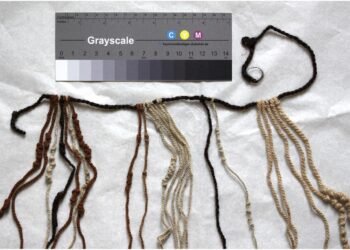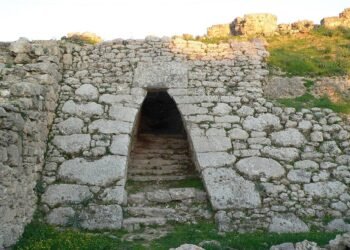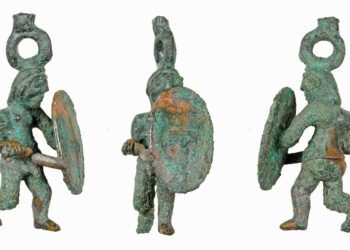Archaeologists have uncovered a burial containing a skeleton that likely dates to the Sialk III period, around 4300 BCE, at the 7,000-year-old Cheshmeh-Ali mound in Rey, south of Tehran.

This find provides valuable insights into one of Iran’s earliest prehistoric settlements, contributing to a deeper understanding of ancient civilizations on the Iranian plateau. The burial was found within architectural layers associated with the Sialk III era, and artifacts such as pottery fragments and structural remnants help reinforce this dating.
“The continuation of excavations in future seasons may enhance our understanding of the architectural layout and daily life within this ancient settlement,” Hamidreza Valipour, head of the Cheshmeh-Ali excavation team, shared in a conversation with ISNA. He further emphasized that the team is hopeful that the Research Institute of Cultural Heritage will grant permission to analyze the skeletal remains, which would allow for precise dating to confirm the burial’s period.
This recent discovery marks the first archaeological examination of Cheshmeh-Ali in nearly three decades. The current excavation project is led by Valipour and his deputy, Iman Mostafapour, with the involvement of professors and students from the Shahid Beheshti University’s archaeology department. Valipour’s team hopes that further analysis will shed light on the burial practices, architectural structures, and cultural aspects of daily life during the Sialk III period.

Located near a historical spring, Cheshmeh-Ali is an area rich with history, both ancient and Islamic. The mound stands approximately seven meters high beside remnants of the old city wall of Rey, which reaches up to 15 meters. Rey, one of the oldest cities in the central Iranian plateau, has a deep cultural history and is mentioned in historical texts, including the Avesta (the sacred Zoroastrian scriptures) and the biblical Apocrypha.
Historically, Cheshmeh-Ali has attracted the attention of several renowned archaeologists. The first excavations at the site were conducted in 1912 by Jacques de Morgan, a French archaeologist who initially led digs at Susa. However, de Morgan abandoned his work, allowing looters to exploit the site, as noted by German archaeologist Friedrich Sarre in 1913. This cycle continued until 1924, when French archaeologist Dayet, affiliated with the French Embassy in Tehran, undertook further excavations. In the 1930s, American archaeologist Erich Schmidt conducted comprehensive studies of Rey, uncovering prehistoric, Parthian, and Islamic layers on the Cheshmeh-Ali mound. His work provided a more detailed chronology of the site but was ultimately interrupted by World War II. After decades of intermittent excavation, Cheshmeh-Ali was revisited in 1997 by Iranian archaeologists Mohammad Rahim Sarraf and Hassan Fazeli Nashli.























